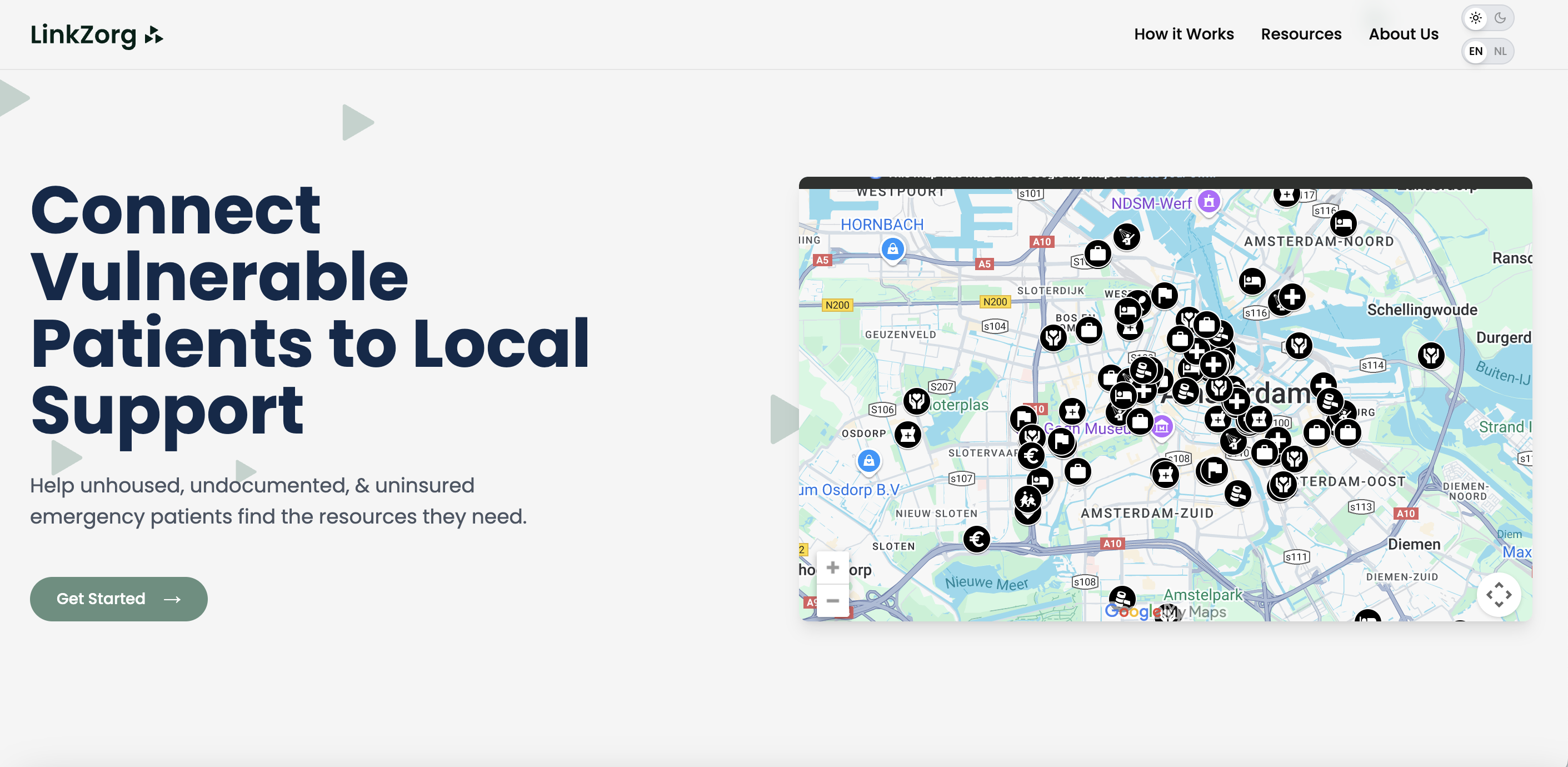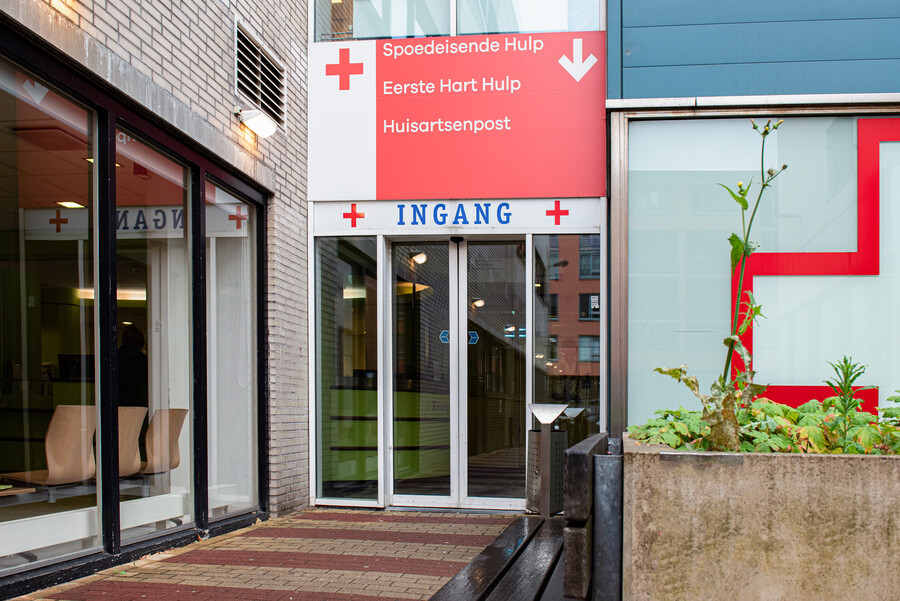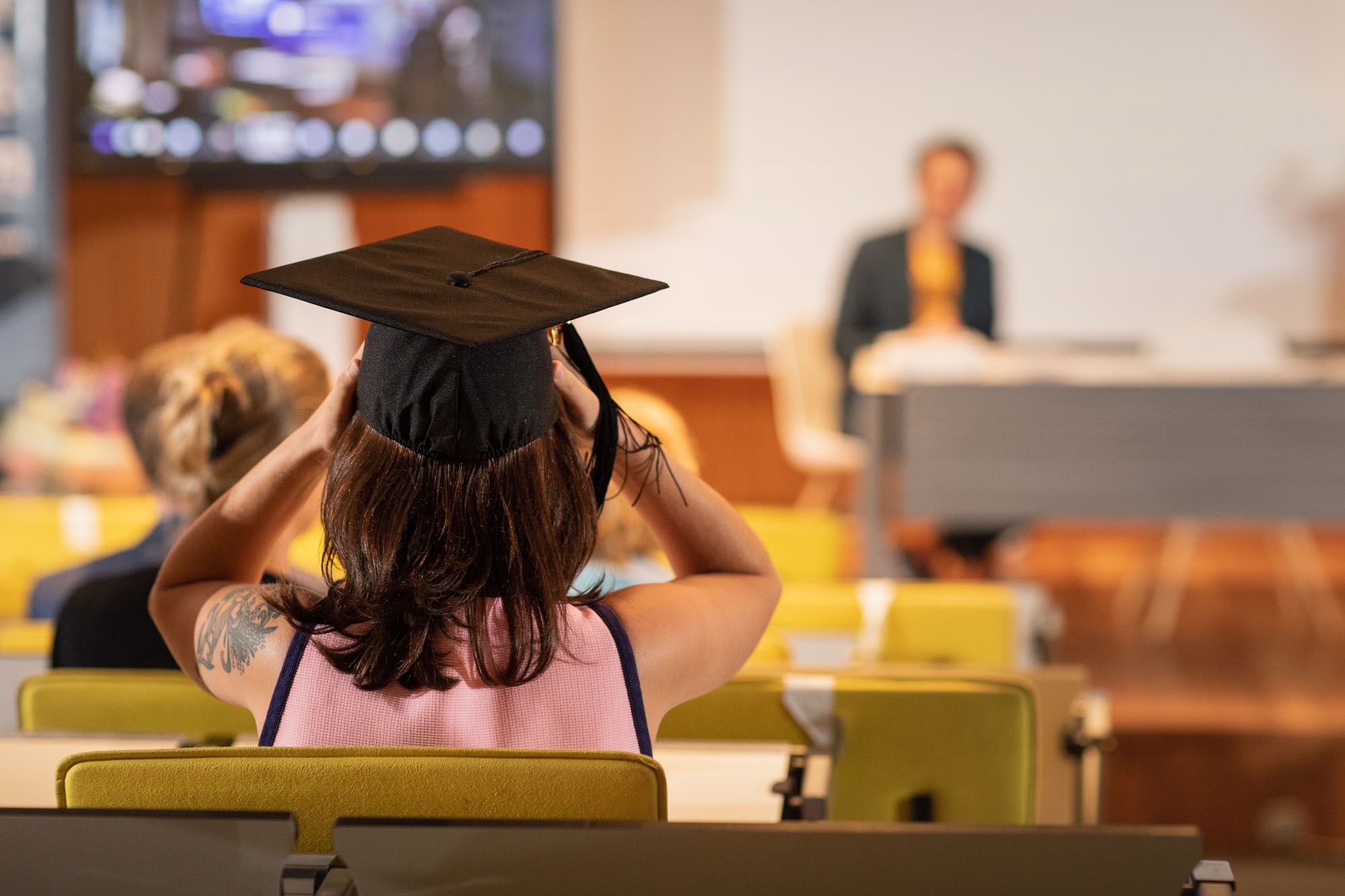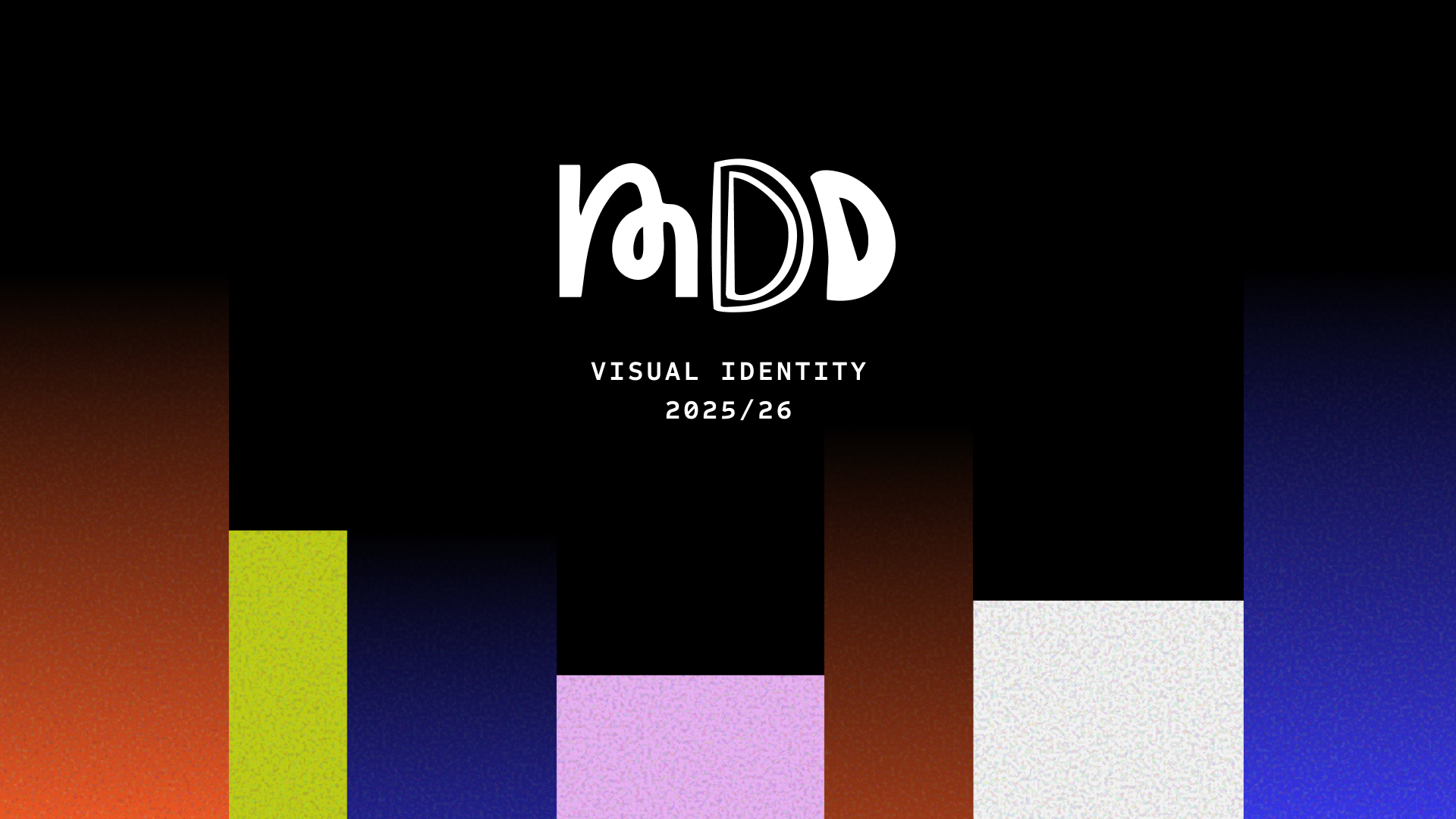Students simplify care referrals for the unhoused in Amsterdam

OLVG’s Emergency Department treats unhoused and uninsured people every day. These people often lead a wandering existence around and in the Oosterpark. In these circumstances they are unable to recover well, causing them to return to the Emergency Department within a short time. To help doctors and nurses with this problem, students of the master’s programme in Digital Design developed a database of all healthcare organisations in Amsterdam specifically for this target group. This is to make referral a lot easier. Uninsured people who are homeless and have no GP now often end up at the Emergency Department of OLVG Oost. Niels van der Naald, who works at the department as an emergency physician through a fellowship, sees these patients almost daily.
Chain of problems
By the time these people end up in emergency care they have already gone through a chain of problems, according to the physician. ‘Their visit to the Emergency Department is often their first – and only – contact with healthcare. Their medical situation is so out of control due to chronic issues that we see the most distressing cases here.’
Back on the streets
After these patients have received emergency care for an infection or wounds they need to recover, for which at the very least they need a place to sleep, follow-up of their medication and follow-up care.
However, after emergency treatment they usually end up back on the streets, after which they return to the Emergency Department presenting complications. Niels van der Naald: ‘We want to find out how we can better help this group. Writing out a prescription or a follow-up appointment is not difficult, but this group needs a different type of help.’

Access to care
Meanwhile, the Master’s programme in Digital Design was looking for a client via whom the students could all work on the same issue: how to provide access to healthcare for undocumented, uninsured and homeless people. Through the OLVG, the programme came into contact with emergency physician Niels van der Naald, who deals exactly with this.
As a result of this collaboration, the Master’s students are now developing a solution to help doctors and nurses in the Emergency Department decide where these patients can go once they leave the hospital.

Quest
Of course, Van der Naald and his colleagues try to arrange for follow-up care, but this can take hours.
‘Sure, we try to avoid patients ending up back on the streets immediately. This lands you in the well-meaning jungle of Amsterdam initiatives, that consists of fantastic people who do excellent work, only for someone who does not operate from that social system, it is difficult to keep an overview', according to Niels van der Naald. ‘Some institutions are only for people who are addicted, others are only for people who are not, some night shelters only open in the winter months, others are only for women, and opening hours are variable. This makes things very confusing.’
For these reasons, doctors and nurses usually refer patients to a few fixed addresses.

Easier referrals
Doctors and nurses, then, have too little insight into which institution is where, and which one serves which target group. Above all, at the Emergency Department they do not have the time to make calls to ensure follow-up care is provided.
Ayu Koene is one of the Master’s students working on this issue. ‘Niels showed us around the Emergency Department and arranged a very interesting visit for us and a group of doctors to four care facilities. We realised it’s helpful if these doctors and nurses who are short on time can refer patients more easily.’
Database with interactive map
The group of students converted all the information into a database for healthcare providers, which can be consulted at LinkZorg.nl
They created an interactive map, since this works best intuitively. Ayu: ‘We all know this system from Google Maps, where you can find an address within two seconds. Doctors can use this map to quickly find a location nearby, for instance if a patient cannot walk.’ A ticket can then be printed that the medical staff can give to the patient.
The map includes filters that healthcare providers find important. These are sorted by what doctors and nurses search for; there are tags like ‘migrant workers’ and other target groups, as well as tags like ‘legal assistance’.

A need for it? One hundred percent
On 26 May, the students presented the database to Niels and his colleagues at the Emergency Department. The doctors and nurses were impressed and would like to see it implemented. Asked if this would really help them: ‘We’re one hundred per cent sure to use this. This helps us enormously.’
The database now needs to be tested and implemented in such a way that the medical staff in OLVG can work with it on a daily basis. This requires a developer and an investor, because this online database needs to be actively maintained. The master is exploring how this next step can be taken.

Start of a greater focus
Niels van der Naald: ‘This is a fine project that allows me as a native of Amsterdam to give a little extra back to my city. It also helps bring this issue to the attention of my fellow doctors.
In the Emergency Department we see how this target group struggles. Many patients came to the Netherlands as migrant workers and ended up the victims of a whole chain; of our welfare state. When you see every day how these people struggle, you do look at these cases differently. You look differently at the uninsured and the homeless, who didn’t choose this story.’
This was a project for the Design for Health/Care Playground
The following people have contributed to this project:
Master’s students Mihaela Chiselită, Daniel Klein, Amanda Wee, Victor Jimoh, Ayu Koene, Matin Mohammadi and Fran Jirásková.
At OLVG Oost: Emergency Department doctors Niels van der Naald and Mathijs Kreeft and Emergency Department nurses Eva Roording, Karin Smit and Annemijn Vermeer.

Three hours of calls from the Emergency Department
Niels van der Naald works at the Emergency Department of OLVG Oost through a fellowship. He explains why homeless patients, many of whom can be found in the Oosterpark, often keep returning for emergency care.
‘This week, for example, I saw a patient; a Polish migrant worker who lost his job, ended up in the street and became addicted to alcohol. He’s been in three times because of infected wounds on his hands. This was because he lost the prescription and his antibiotic treatment. He ended up threatening suicide, not because he wants to die but because he’s desperate.
My colleagues understandably get irritated because he’s come with the same problem for three times. It’s true that the behaviour of these patients is sometimes a bit extreme. His problem, however, is his alcohol addiction and living in the street. Prescribing another antibiotics treatment won’t help if this man dives back into the bins. Many wounds on hands are due to people digging for deposit-refund products.
We eventually managed to find this man a place with basic hygiene, shelter, food and drink, and antibiotic monitoring. The hospital arranged and paid for a taxi to take the patient to the location in Nieuw-West. It worked out because, through Dr. Valkenier among other people, I got in touch with a mentor at De Regenboog Groep, but it took three hours of making phone calls. We really never have this time to spare.
Others see an irritating alcoholic who takes bad care of himself, but this is obviously a deeply miserable man who faces many problems. We do need to uphold this awareness in our group of doctors and nurses. This projects not only helps arrange follow-up care but also to reinforce this awareness.’

